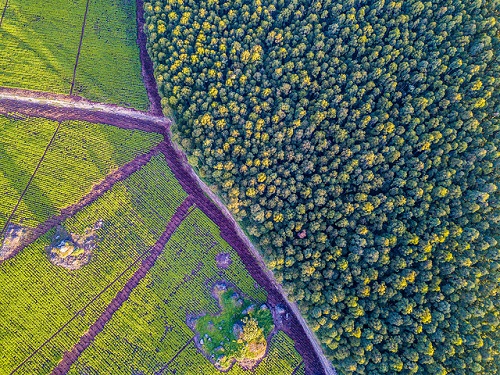A guide to selecting ecosystem service models for decision-making Lessons from Sub-Saharan Africa

Summary
Ecosystems are essential to human life, livelihoods and wellbeing. Many national policies and international agreements include goals to protect ecosystem services. A new guide – commissioned by the Ecosystem Services for Poverty Alleviation (ESPA) programme and written by Professor James Bullock of the Centre for Ecology and Hydrology (CEH) and Helen Ding of World Resources Institute (WRI) – helps readers to assess how ecosystem service models could support policy-making in their countries (download the full article from the right hand column).
Ecosystem protection features in several of the United Nations Sustainable Development Goals – particularly those on terrestrial ecosystems and biodiversity, and the marine environment. Some countries’ national climate action plans, submitted under the 2015 Paris Agreement, include ecosystem-based approaches to climate change adaptation and mitigation. To date, 127 countries have joined the Intergovernmental Science-Policy Platform for Biodiversity and Ecosystem Services (IPBES), an international body to strengthen collaboration between scientific experts and policy-makers on biodiversity, long-term human wellbeing, and sustainable development.
In order to manage ecosystem services sustainably, decision-makers need to understand the extent and condition of ecosystems. They must be able to predict the impacts of alternative policies or management decisions on the environment.
Frequently, there is not enough measured data on ecosystem services. In these situations, models can provide useful information based on assumptions from similar places. Modeling is especially useful in developing countries, where measured data may be scarce.
The guide is particularly suited to advisors and technical managers who are supporting policy-makers.
It is based on results from the 2013–16 WISER project, which assessed several ecosystem service modeling tools in sub-Saharan Africa. Policy advisors from Malawi and Uganda contributed actively to the guide’s development.
The guide includes:
- Advice on how models can inform different types of policy and programme decisions
- Guidance on how to consider technical capacity and resource needs, when selecting an appropriate model
- Case studies that draw on current policy issues and modeling experience in Africa.
The ESPA programme is funded by the United Kingdom’s Department for International Development (DFID), the Economic and Social Research Council (ESRC) and the Natural Environment Research Council (NERC).
Citation of featured article: Bullock, J and Ding, H. (2018) A GUIDE TO SELECTING ECOSYSTEM SERVICE MODELS FOR DECISION-MAKING. Lessons from Sub-Saharan Africa. 1st edition, January 2018. WRI, Washington.
(0) Comments
There is no content